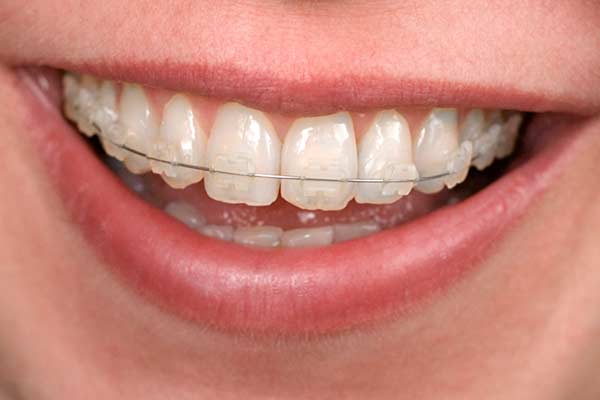Comprehensive Overview to Orthodontics Procedures for Dealing With Oral Misalignments
Understanding the intricacies of each treatment, including their mechanisms, advantages, and possible disadvantages, is critical in making informed decisions regarding one's orthodontic therapy. As we navigate with the detailed guide to orthodontic procedures for dealing with dental imbalances, the intricate details of each approach will certainly unfold, losing light on the path toward a useful and harmonious oral placement.
Orthodontic Procedures Summary

Along with typical dental braces and clear aligners, orthodontists may also recommend various other interventions like headwear, palatal expanders, or retainers to attend to details alignment issues (cumming braces). These treatments are customized to every client's distinct requirements and may involve a combination of therapies to attain the wanted outcomes. Routine modifications and tracking are crucial components of orthodontic therapy to ensure progress gets on track and to make any kind of needed adjustments along the road. By undergoing orthodontic treatments, individuals can not just attain a straighter grin but also boost their general oral wellness and function.
Conventional Dental Braces: Exactly How They Function
When considering orthodontic therapies for dental misalignments, typical dental braces stick out as a tried and true technique for remedying teeth positioning. Typical braces consist of braces, cords, and bands that collaborate to apply constant stress on the teeth, gradually moving them into the preferred placement. The brackets are affixed to the teeth utilizing an unique adhesive, and the wires are threaded with the braces. By changing the stress of the cables, orthodontists can control the direction and force related to each tooth, directing them into proper positioning in time.
As stress is applied to the teeth with the braces, the bone bordering the teeth is reshaped to support the brand-new tooth settings. Patients will certainly need routine adjustments at the orthodontist's workplace to make certain the dental braces continue to use the appropriate stress for reliable teeth movement.
Undetectable Aligners: Disadvantages and pros
Undetectable aligners offer a very discreet and convenient option to standard braces for remedying oral misalignments. These clear, custom-made trays are essentially unnoticeable when used, making them an attractive alternative for individuals seeking a much more aesthetically pleasing orthodontic therapy. One of the main benefits of invisible aligners is their removability, enabling for less complicated maintenance of oral hygiene contrasted to traditional dental braces. People can get rid of the aligners before consuming or brushing their teeth, minimizing the risk of food getting stuck in the home appliance and streamlining the cleansing process.

Surgical Orthodontic Options
Surgical interventions in orthodontics existing feasible choices for dealing with intricate dental imbalances that may not be properly fixed through conventional orthodontic therapies. While unseen aligners and conventional dental braces can fix several orthodontic issues, specific cases need medical intervention to accomplish optimum results. Surgical orthodontic choices are normally suggested for severe malocclusions, significant jaw inconsistencies, and instances where the underlying bone structure requires alteration to accomplish correct alignment.
One typical medical orthodontic procedure is orthognathic surgery, which includes rearranging the jaws to deal with functional problems such as problem speaking or chewing. This surgical treatment is often carried out in partnership with an orthodontist that aids line up helpful site the teeth prior to and after the treatment. Surgical orthodontics might also involve procedures to expose affected teeth, eliminate excess periodontal cells, or reshape the jawbone to produce an extra harmonious facial profile.
Before thinking about medical orthodontic options, clients go through a thorough evaluation to determine the necessity and prospective benefits of such interventions. braces. While surgery may seem difficult, it can substantially enhance both the feature and visual appeals of the smile in cases where conventional orthodontic therapies drop short
Retainers and Post-Treatment Treatment

Post-treatment treatment entails complying with the orthodontist's directions carefully. This may consist of correct oral hygiene techniques, going to follow-up appointments, and putting on the retainers as recommended. Failure to abide by post-treatment treatment directions can lead to regression, where the teeth slowly relocate back in the direction of their initial positions. Regular retainer wear, great oral health, and regular oral examinations are necessary for preserving the results accomplished through orthodontic surgical procedure and making certain the long-lasting security of the remedied dental positioning.
Conclusion
Finally, check over here orthodontic treatments provide numerous options for correcting oral imbalances. Conventional dental braces make use of metal braces and wires to shift teeth right into proper positioning. Unseen aligners supply an even more discreet alternative however might not appropriate for all cases. Surgical orthodontic options are offered for extra extreme misalignments. Retainers are frequently made use of post-treatment to keep the brand-new alignment. In general, orthodontic procedures can successfully boost oral health and aesthetic appearance.
As we browse via the thorough overview to orthodontic treatments for remedying dental misalignments, the intricate details of each method will certainly unravel, dropping light on the path toward a harmonious and useful oral positioning. - cumming braces
One of the most usual orthodontic treatments is the use of braces, which are composed of steel brackets and wires that apply mild pressure to gradually change teeth right into the preferred position.When considering orthodontic treatments for dental misalignments, typical dental braces stand out as a time-tested approach for remedying teeth positioning. Additionally, invisible aligners might not be suitable for complex orthodontic problems that need more considerable teeth activity, as they are generally suggested for moderate to moderate cases. Retainers are customized orthodontic tools created to hold teeth in their fixed placements after the conclusion of orthodontic treatment.